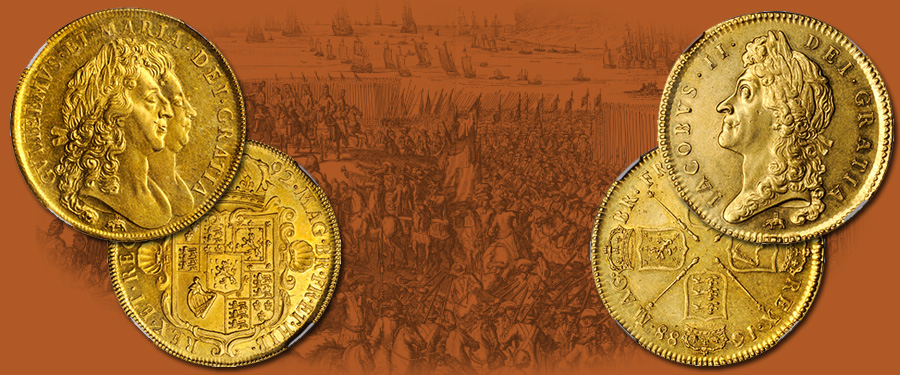
The modern cohesion and power balance between the Crown and Parliament in the United Kingdom developed broadly from the events surrounding the Glorious Revolution in 1688, whereby Catholic James II was toppled and forced into exile in favor of his daughter, the Anglican Mary Stuart, and her Protestant Dutch husband, William of Orange. This revolution, while restoring an Anglican/Protestant monarch and forever preventing Catholic rule, also aided in strengthening the role and position of parliament, removing the heretofore absolute monarchical system under which the kingdom had been ruled for centuries.
The English Civil War, which saw the removal from power and subsequent execution of King Charles I, threw the realms of England and Wales, Ireland, and Scotland into internal conflict for over a decade. When the rule of Oliver Cromwell—and later, his son Richard—proved no better, there was a push to return to the monarchy and the House of Stuart, this time under Charles II, the rightful heir and son of the slain former monarch. Though born of a Catholic mother (Henrietta Maria of France), Charles maintained his support for the Church of England, creating a tenuous balance between rival religious factions throughout the personal union. Upon his death in 1685, the crown passed to his younger brother James, as Charles had had no surviving legitimate heirs of his own. The new king, James II, unlike his brother and father, maintained the Roman Catholicism of Henrietta Maria, much to the ire of his subjects. James’ rule was the breaking point regarding not only the primacy of Anglicanism with respect to the Crown, but also the primacy of Parliament over said Crown. The era of absolute rule in the British Isles was over.
When James II was driven from power and into exile in 1688, less than four years into his reign, a more modern socio-political system began to form, whereby the elected members of Parliament held more power and the Crown was not autocratic and absolute. James’s daughters, Mary and Anne, had been raised Anglican at the behest of their uncle, Charles II, making them the royal line desired by the Catholic-fearing majority in the kingdom. As such, Mary and her Dutch husband, Prince William of Orange, were installed as the new English sovereigns, styled Mary II and William III, ushering in with them greater religious tolerance from the populace along with a recognition that the sovereign was not absolute. Just four years after becoming queen, however, Mary contracted smallpox and died at the age of 32, leaving William as the sole monarch until his own death a decade later in 1702. As the couple was without issue, the Crown then passed to Anne, who ruled favorably, yet also without a surviving heir, until her death in 1714. The Bill of Rights signed in 1689 had established further succession, should such a situation present itself. The next in line would be William’s children from any subsequent marriage, if he were to have any. As there were none, the heir was settled through the Act of Settlement, passed in 1701. This act established Sophia, the Electress of Hannover and a granddaughter of James I, as the heir presumptive, with succession passing through her non-Catholic heirs. Sophia’s death preceded Anne’s by less than two months, leaving Sophia’s eldest son, Georg Ludwig, to ascend to the British throne, styled George I. It is from his German line that the British sovereigns today still hail.
From the period of these tumultuous events, two such 5 Guinea issues, a 1688 of James II (NGC AU-58) and a 1692 of William and Mary (NGC MS-62), will be among the many exceptional rarities in our upcoming auction held in conjunction with the New York International Numismatic Convention (NYINC) in January 2020. These two pieces both emanate from the prestigious Marlborough-Blenheim Collection. Look for these along with numerous other highlights as we approach this tremendous sale.
To view our upcoming auction schedule and future offerings, please visit StacksBowers.com where you may register and participate in forthcoming sales. We are always seeking interesting and exceptional coins, medals, and pieces of paper money for our future sales, the next of which is our Official Auction of the N.Y.I.N.C. in January 2020. If you would like to learn more about consigning, whether a singular item or an entire collection, please contact one of our consignment directors today and we will assist you in achieving the best possible return on your material.





